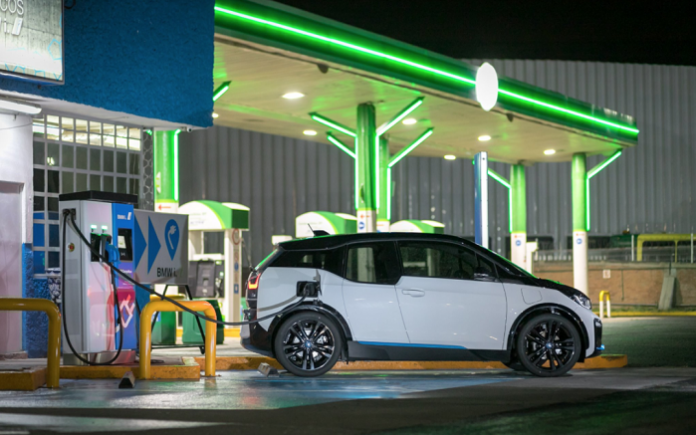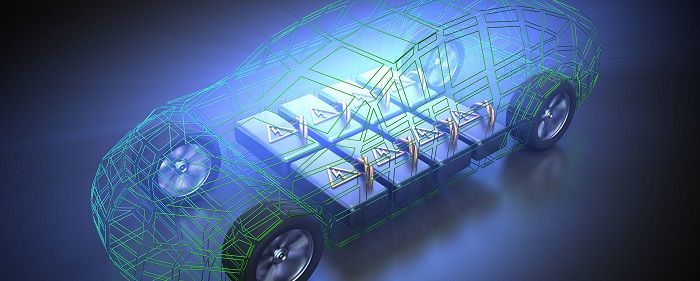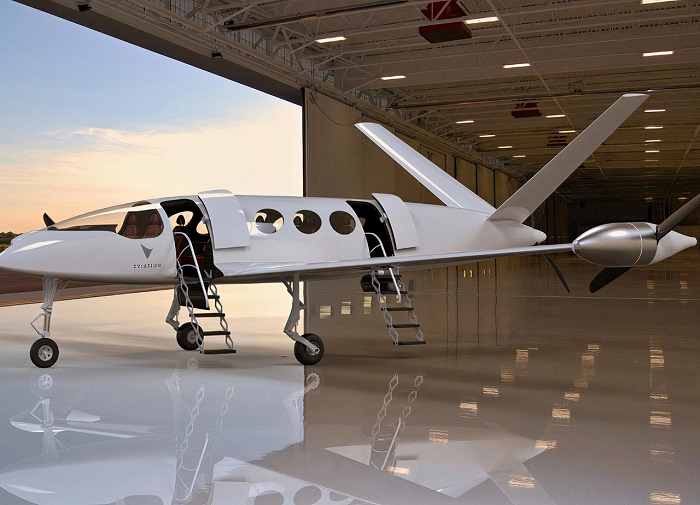Every Year, the world uses 35 billion barrels of oil. This massive scale of fossil fuel dependence pollutes the earth, and it won’t last forever. Scientists estimate that we’ve consumed about 40% of the world’s oil. According to present estimates, we’ll run out of oil and gas in 50 years or so, and in about a century for coal. This represents a huge challenge.
And, this is not just it, most of us are not even realizing that we are collectively the titanic ship that is reaching its inevitable destructive iceberg, famously known as ‘Climate change.’ We as a human species are continuously knocking the stuffing out of this planet in the name of development. The greenhouse emission from vehicles is massive and it is causing damage to the environment with a force faster than yesterday. A typical passenger vehicle emits about 4.6 metric tons of carbon dioxide per year. This number can vary based on a vehicle’s fuel, fuel economy, and the number of miles driven per year. Road transport is a major source of air pollution that harms human health and the environment. Vehicles emit a range of pollutants including nitrogen oxides (NOx) and particulate matter (PM).
Scientists and researchers have always been digging in for alternatives that can effectively cut carbon emissions and come out as a more sustainable alternative. Well, the good news is that we have found a bunch of alternatives that can foreshorten the environmental damage and eventually let this civilization enjoy this pale blue dot of a planet. One such alternative is eMobility.
Fundamentally, eMobility encompasses mobility using electricity rather than fuels, oils and fossils. Electromobility (or eMobility) represents the concept of using electric powertrain technologies, in-vehicle information, and communication technologies and connected infrastructures to enable the electric propulsion of vehicles and fleets.
Electric vehicles are taking over streets – from hybrids that feature both an electric engine and a traditional combustion engine, to fully electric vehicles with battery cases.
Constantly increasing focus on tackling climate change, cutting vehicle emissions and improving air quality is fueling this transformation. Alongside new laws and regulations, changing consumer expectations are also accelerating the switch to eMobility. Climate change, oil shortage, air pollution: Mobility has to be Co2-neutral in the future. E-cars and hybrid vehicles emit fewer exhaust gases than cars with combustion engines if any. emobility is therefore an important way of enabling that – as long as the power is obtained from renewable energies.
emobility is the use of electric cars, as well as e-bikes or pedelecs, electric motorbikes, e-buses and e-trucks. The common feature of all of them is that they are fully or partly driven electrically, have a means of storing energy onboard, and obtain their energy mainly from the power grid. Electric cars are quiet, efficient and low-emission and have mainly been used to date in cities, where they’re ideal for delivery services, taxis and car-sharing.
An Electric Future is closer than we think
 All 27 EU Member States committed to turning the EU into the first climate-neutral continent by 2050. In this timeframe, the number of private cars worldwide will more than double to 2.5 billion, so demand for energy continues to rise while fossil fuels dwindle. The world cannot simply continue as before. The UK, France, Norway and Germany have even brought in legislation to ban the sales of non-electric vehicles as early as 2025. This makes the Electric Vehicle industry one of the most exciting, significant and necessary areas of innovation today.
All 27 EU Member States committed to turning the EU into the first climate-neutral continent by 2050. In this timeframe, the number of private cars worldwide will more than double to 2.5 billion, so demand for energy continues to rise while fossil fuels dwindle. The world cannot simply continue as before. The UK, France, Norway and Germany have even brought in legislation to ban the sales of non-electric vehicles as early as 2025. This makes the Electric Vehicle industry one of the most exciting, significant and necessary areas of innovation today.
Talking about India, from the Ministry of Power to the Ministry of Road Transport and Highways, many government stakeholders have made policy changes. The Ministry of Power, for example, has clarified that charging EVs is considered a service, which means that operating EV charging stations will not require a license. It has also issued a policy on charging infrastructure to enable faster adoption of EVs. Meanwhile, the Ministry of Road Transport and Highways have announced that both commercials and private battery-operated vehicles will be issued green license plates. It has also notified that all battery-operated, ethanol-powered, and methanol-powered transport vehicles will be exempted from the commercial permit requirement, said Bhavneesh Athikary, Automotive Lead, Indo-Pacific, Hexagon in an exclusive interview with ELE Times earlier.
Breakthrough EV Technologies that are pushing the emobility vision forward.
By mapping and streamlining the process of product design and creation, Electric Vehicle makers can seize on the latest technology in the industry. Estimates are wild, but sources like CNBC and International Energy Agency believe it to be significant. The strength of electric vehicles on roads around the world will be 125 million by 2030, the International Energy Agency estimates.
Here are some of the breakthrough technologies that will directly reverberate the driver’s EV experience and the whole EV ecosystem as well.
- Battery technology
Advancements in battery technology have been painfully slow for many industries, including Electric Vehicles. And the progress in their optimization has been so minimal that it looks like lithium-ion will be the go-to solution for many years to come.
But the steady improvements in cell chemistry, anode and cathode material, higher-yield fabrication process and economies of scale should help see a reduction in cost for each battery by around 6-8% every single year.
But there are some exciting developments in other alternatives to lithium-ion in the works. Solutions like micro-capacitors, miniaturized solid oxide fuel cells, graphene polymer, aluminium-graphite, and gold nanowire technology and even sodium-based alternatives could very well replace the seemingly outdated lithium-ion very soon.
- Vehicle to Grid (V2G)
V2G is a key area of EV charging energy management, enabling two-way energy exchange between the vehicle and the grid. With V2G, energy stored in Electric vehicles can be fed back to the grid at times of peak demand to minimize the strain. Given that the average car is parked for around 95% of the day, V2G connectivity offers the potential to optimize grids by leveraging millions of EVs as decentralized energy storage resources, with no capital or operating costs. This approach turns EV drivers into “prosumers” – a consumer of the grid and a provider of energy – thus enabling them to reduce their costs of EV charging and receive other discounts on their electricity usage.
- Intelligent Vehicles
Autonomous, self-driving vehicles have caught the interest of fleet and private consumers alike. Take companies like Einride, the Swedish company behind the T-pod and T-log, which has developed a system whereby an operator can remotely control multiple self-driving trucks at once, cutting out the need for a large, dedicated team of full-time operators and drivers. This level of efficiency is reinventing whole markets.
- Electrify ICE
So popular are EVs that even established ICE giants are now moving towards converting their ICE-powered vehicles to hybrid or fully electric. To take advantage of this trend, EV design teams are looking beyond EV-only products. The best is using advanced PLM tools to figure out how to work smarter, analyzing their designs and simulating a wide range of environments to see how their ideas can be adapted for ICE-to-EV conversions, swiftly and efficiently.
- Autonomous driving
Many EV manufacturers have already made great leaps forward in autonomous driving. Tesla, Toyota, Peugeot and many more are relentlessly working on making this a reality for the vast majority of car owners in the future.
Not only will this make long drives more comfortable for drivers, but it could also make our roads a lot safer. Once set as a global standard, it will probably kill off several traditional jobs like taxi firms, chauffeurs, and long-haul lorry freight operators and put pressure on newer professions like Uber drivers.
The development of electromobility to the present day
Electromobility is regarded as a modern trend, but to be precise, it’s not an invention of our times. Way back in 1867, and hence before the advent of the combustion engine, Werner von Siemens presented his electric generator based on the dynamo-electric principle at the World’s Fair in Paris. The invention enabled the low-cost, flexible generation of electricity wherever it was needed and thus electrification in everyday life, industry – and vehicles.
The first cars with an electric motor were presented at the end of the 19th century. That from the Belgian Camille Jenatzy even set a record in 1899: It was the first road vehicle of any kind to reach a speed of 100 km/h. From the end of the 19th century, trains and trams were supplied with energy by overhead lines or power rails. As figures from the year 1900 show, e-cars were still widespread at the start of the 20th century: 22 per cent of vehicles on U.S. roads had a combustion engine, 40 per cent were steam-driven, and 38 per cent were electrically powered. The combustion engine had a disadvantage back then: Vehicles had to be cranked up at considerable effort to get started. Gasoline drives did not begin to displace other types of powertrain until 1911 when the electric starter was invented.
Electromobility solutions by Infineon
Guided by the principle “easier, safer and greener,” Infineon collaborates with manufacturers and suppliers to create the vehicles of tomorrow. And with success: Power chips from Infineon were found in the electric drivetrain in 17 of the 25 most-sold fully electric cars and plug-in hybrids in 2020. “The trend toward the e-car is picking up at a tremendous pace. We see that in our order books,” says Reinhard Ploss, Chief Executive Officer of Infineon.
Yet even though e-vehicles and plug-in hybrids are far more energy-efficient than cars with a conventional powertrain, there’s still quite a bit that has to be optimized. Power losses need to be minimized, power savings maximized, and overall performance increased. Infineon offers a wide range of power semiconductor components for various systems. They cut the costs for the drive and electronics, yet increase energy efficiency. In general, demand for semiconductors will increase sharply as electromobility becomes more widespread. Infineon assumes that more and more components with silicon carbide power semiconductors will be used in new developments in the future – such as the charger in the car, the inverter or the DC-DC converter.
Blockchain-led eMobility electric vehicle Ecosystem of the Future.
In a business 4.0 world, ecosystems can be especially useful in driving the adoption of electric vehicles. With a renewed focus on emobility, the increased traction of blockchain technology across industries provides an opportunity to design ecosystems that are more open, modular and interoperable compared to existing models of ecosystems. With blockchain technology as a key building block, we can look forward to ecosystems with equal distribution of influence amongst different entities, efficient business processes between partners and transparent governance models. Most importantly, the open design and transparency will lead to better alignment amongst the several stakeholders towards a common goal of ensuring the market success of electric cars.
Aviation Goes Electric, Eviation Alice: Electric Plane
If you thought electric mobility is only restricted to land, you may be proved wrong soon enough. This is because several companies are working towards having planes that are powered by batteries rather than non-renewable aviation-grade fuel. And the work may be close to completion as Eviation, often referred to as ‘Tesla of aircraft’, and recently showcased the production version of its Alice long-distance plane.
Eviation Alice has managed to grab a whole lot of spotlight ever since the prototype was first showcased back in 2017. It was one of the first of very few electric planes that were deemed viable for commercial use. The Israel-based company had previously claimed a range of around 960 kilometres but this has now been revised to around 815 kilometres. It can seat as many as nine passengers and has a two-crew setup. The company outlines that it is powered by two magni650 electric propulsion units from magniX and that the advanced fly-by-wire system is made by Honeywell.
The Future of eMobility
Despite all the highly promising forecasts, electromobility is still in its infancy – not only as regards its low market share to date, but also from a technical perspective. emobility will only live up to the hopes pinned on it if the price of cars and batteries falls, charging networks grow and also become more intelligent, and e-cars achieve a level of energy efficiency to make them ready for the market. A lot is happening, especially in terms of energy efficiency. Companies and researchers are continuously working to enhance batteries. Initial tests on a battery with an electrolyte based on water instead of lithium salts sound highly promising. A special saline solution doubles the water’s electrochemical stability. That might give rise to a safe, efficient and low-cost new battery technology.
While having an insightful conversation earlier about the electric future of India with Mohal Lalbhai, Founder and CEO of Matter., India, Mohal mentioned something very interesting regarding the future of electric vehicles and how it can be a headway for emobility for India- “ If you envision perhaps in the new future, you will see millions of EVs on the road, can you imagine how much intelligence, charging infrastructure, energy (EVs) it needs to really fulfil the expectations of the people. A national charging infrastructure, as I see it, is one of the most important things that can be done. It is one of the most important aspects that will facilitate e-mobility in order to make the breakthrough.”
Mayank Vashisht | Sub Editor ELE Times











